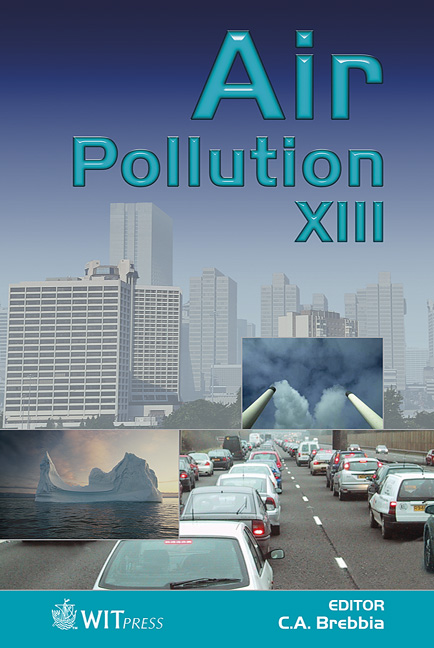Micromixing Effects In Air Pollution Modelling
Price
Free (open access)
Transaction
Volume
82
Pages
12
Published
2005
Size
433 kb
Paper DOI
10.2495/AIR050021
Copyright
WIT Press
Author(s)
A. Garmory, E. Richardson & E. Mastorakos
Abstract
Predicting the dispersion of reacting pollutants close to their source is a topic of importance in Air Quality Modelling. The conventional method of neglecting species concentration fluctuations is not valid for such small-scale problems. Var-ious methods that incorporate segregation are reviewed here and their use for typ-ical atmospheric dispersion problems is illustrated through numerical simulations of a simplified problem. By comparison with experimental data, it is found that micromixing can affect the evolution of the mean reaction rate and that the models presented here are more accurate than if segregation were not included. Further work should focus on the interfacing of these models with practical Air Quality calculations. Keywords: segregation, turbulent reacting flows, air quality. 1 Introduction A current goal of urban air quality studies is to predict as accurately as possible the pollution that humans actually experience. Grid models for cities must hence have enough resolution to track the pollution produced in street canyons or dispersed in the immediate vicinity of industrial sources. This necessitates novel approaches concerning the chemical reaction and its interaction with the atmospheric turbu-lence because the reactant segregation,ormicromixing, cannot be neglected at such fine scales. The purpose of this paper is to demonstrate that this is indeed the case for typical small-scale dispersion problems, to review some of the previous work on this topic and to suggest methods by which segregation can be taken into account. Some new results from our own efforts in implementing advanced turbu-lent reacting flow theories in atmospheric dispersion problems are also presented.
Keywords
segregation, turbulent reacting flows, air quality.





